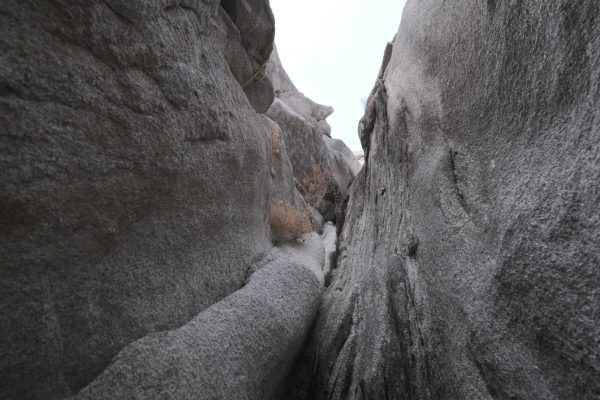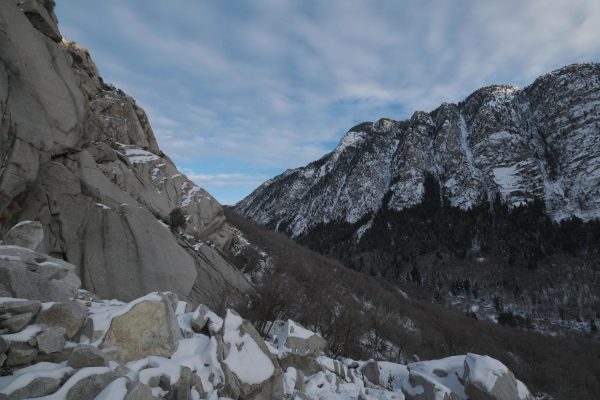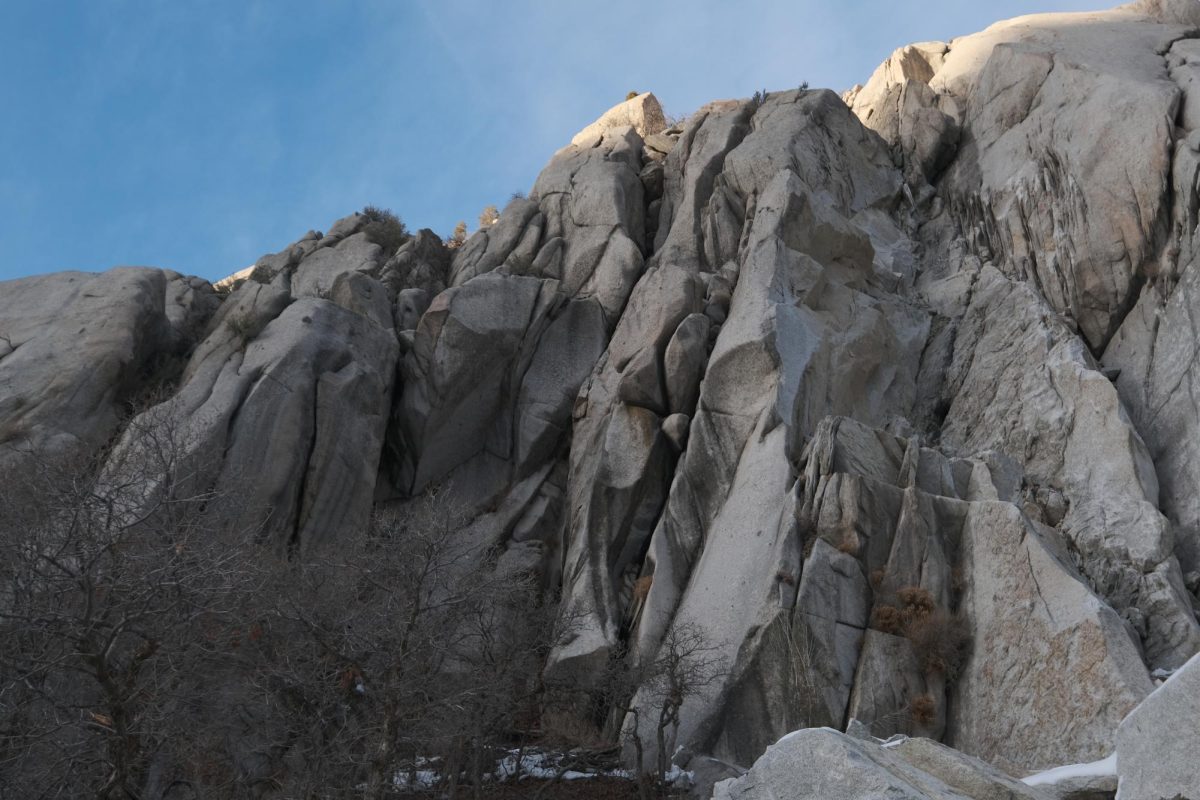If you’ve spent any amount of time in Little Cottonwood Canyon, you are sure to know of the Alpenbock Loop. Roughly a mile long, the trail was created through a partnership of multiple organizations, including the Salt Lake Climber’s Alliance and Trails Utah. It provides easy access to some of the most popular climbing near the front of the canyon—and the entirety of the Wasatch Front, for that matter.
For years, the existence of this trail and other connecting trails has nurtured climbing in the area while maintaining the integrity of the surrounding environment. This cohabitation between climbers and nature is vital to the longevity of the sport. Back in August of last year, this loop became the first climbing area to join the National Register of Historic Places under the moniker Little Cottonwood Canyon Climbing Area. This development paves the way for other climbing areas to do the same.
But what the hell is an “alpenbock?” Why is the trail named after it? The answer to these questions takes us back to the late 1950s, to the formation of the Alpenbock Climbing Club. To a time before the trails and signs. Before guidebooks, before the Mountain Project, and before modern equipment. Well before the emergence of social media. A golden age of pioneering. When the rock’s potential was at its peak. This is the story of those climbers who stepped largely into the unknown, creating ripples that have since transformed into extraordinary waves.

The Alpenbock Climbing Club
It’s the 1960s. A ragtag bunch of recent high school graduates and university students, members of the Alpenbock Climbing Club shared one passion above all others: climbing. They put up many of the early first ascents in Little Cottonwood and aided in search and rescue operations throughout the Wasatch Front. Where many in the region found the climbing to be too technical or the gear too hard to place, these club members forged their own path forward. Whether they were visionaries or simply adrenaline junkies, their decision to explore what Little Cottonwood had to offer forever changed it. They were the maverick spark that caught fire, putting into motion everything that has given Little Cottonwood Canyon its national renown.
Alpenbock members recorded their escapades within two journals: the Alpenbock Climbing Club Scrapbook volumes I and II. These scrapbooks chronicle the activities of the club over four years, more or less, from 1961 to 1965. Within them you will find tales of high adventure throughout the West, most notably the Cottonwood canyons and the Teton Range. You will also find the shenanigans and antics typical of young people: rowdy parties, made-up challenges, questionable sleeping arrangements, the works. Nice to know not much has changed.
Some entries note failures or less-than-ideal rock climbing (their words, not mine). These, however, are outweighed by the many anecdotes of triumphant ascents done by members of the club. One I found particularly fascinating was the account of the first ascent of a route called “The Thumb,” now more well known as “The Standard Thumb.” This was done by Alpenbock members Dave Wood, Bob Irvine, and Ralph Tingey on April 21, 1962. This route had been attempted five other times by club members, failing each and every time.
Wood, Irvine, and Tingey fought hard, and came better prepared this time around. Using expansion bolts and chromoly pitons (remember, this was back in the 60s) they were able to climb beyond the pitch that had defied them the past year. After a few pitches of difficult climbing—which, back then, meant only about 5.6—and some more easier pitches, they reached the summit. Wood writes in his entry, “‘The Thumb’ had been one of our climbs.” And that statement is still true as the route remains one of the most well known and recognizable in the Canyon.

A common theme throughout many of their stories, at least those in the Cottonwoods, is bushwhacking. Back in the ‘60s, climbing in the Cottonwoods was still in its infancy, and as a result, so was route access. Climbing access in the region has come a long way since the Alpenbock era, though, and for good reason. The number of climbers continues to grow as the sport gains popularity. Having reliable access to good outdoor climbing is crucial, not only for the longevity of the sport, but for the longevity of the areas we climb in. Where bushwhacking was once necessary, trails have been put in place. This keeps each individual’s impact confined to a shared route, rather than a multitude of vague paths that each cause their own disruption of the surrounding ecosystem.
So what has become of the club now? Some of its members have found great renown. Most notably, perhaps, Ted Wilson—once historian of the Alpenbock Club—served as the 30th Salt Lake City mayor from 1976 to 1985. Rick Reese—former Alpenbock president—had an impactful career in environmental stewardship, founding the Greater Yellowstone Coalition and helping create the Bonneville Shoreline Trail. All members, however, will be forever immortalized in the stories told within the scrapbooks.
It is because of their contribution to climbing history in the area that the Alpenbock Loop took up the club’s name. Their dedication to finding and developing routes within Little Cottonwood are reflected in the trail’s mission to create better access for climbers and spectators alike. And now, with its status on the National Register of Historic Places, it should be protected for generations to come. While being on the Register does not outright save the area from being altered—or even demolished—its recognition as a historic site gives it a kind of sacred air that can act as a shield against unwarranted development.
More and more climbers will be able to enjoy the rock Little Cottonwood has to offer in the following years. With this, however, comes responsibility. As Salt Lake residents, Little Cottonwood enjoyers, outdoors-people, and—most importantly—as climbers. It is our responsibility to do what we can to uphold the integrity of this area that we so treasure. There are some issues that lay outside of our reach, of course, but we have more influence than we sometimes think.
There is one question that I haven’t answered quite yet. What is an “alpenbock?” Of course, it’s the name of the club, sure, but does it mean anything else? I found the answer in a yellowing newspaper clipping pasted in the second volume of the scrapbook. According to one of the club presidents, Dick Wallin, “alpenbock” means mountain goat. Who knew? So, if you happened to have found this little article of mine to be absolutely deplorable—the lowest of lows—at least you learned a new word. What brightens a day more than learning a new word?
Side note: Alpenbock is also the German name for a Rosalia Longicorn, a kind of longhorn beetle. It’s the gift that keeps on giving!



